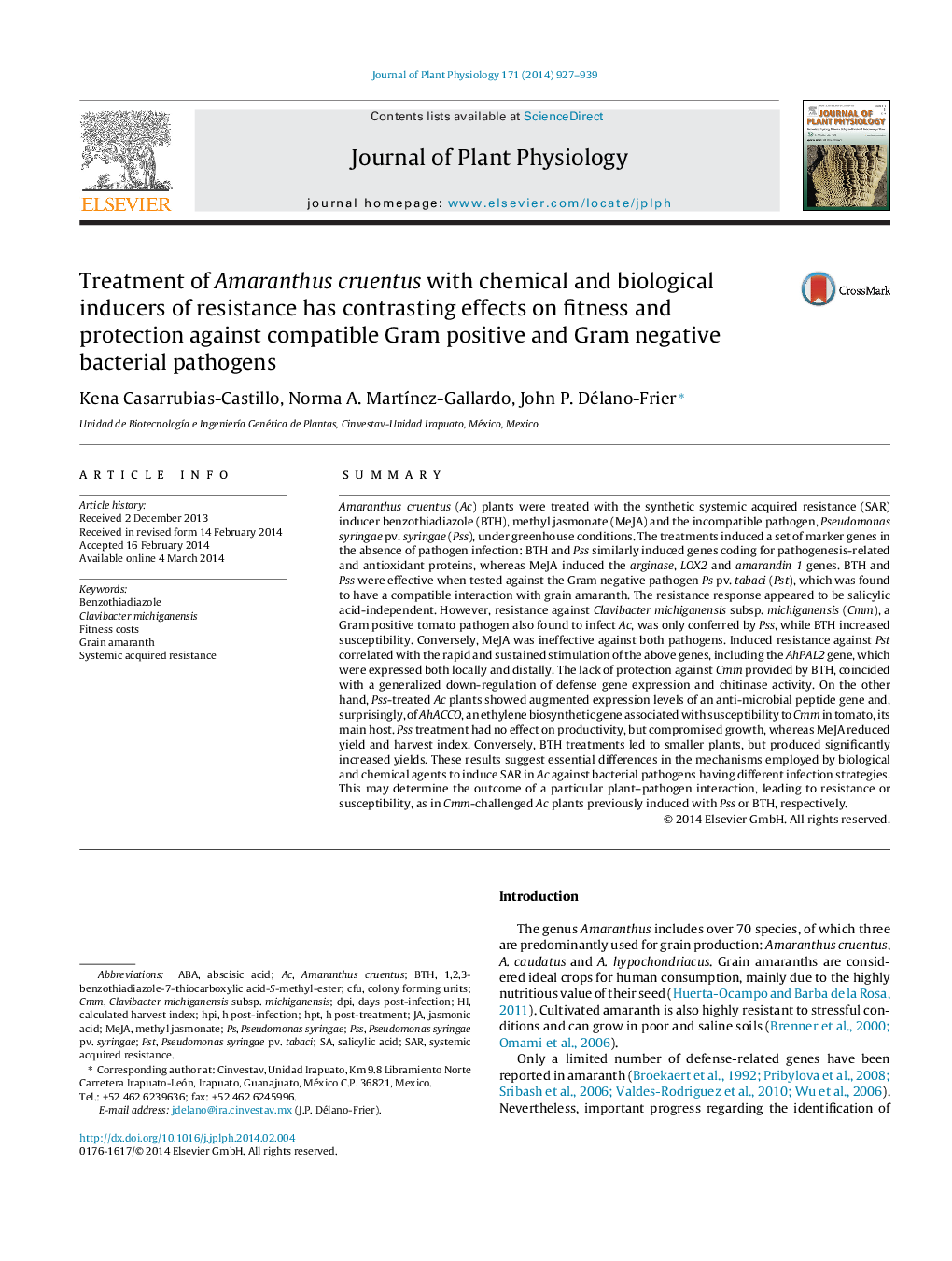| کد مقاله | کد نشریه | سال انتشار | مقاله انگلیسی | نسخه تمام متن |
|---|---|---|---|---|
| 2055937 | 1075790 | 2014 | 13 صفحه PDF | دانلود رایگان |

SummaryAmaranthus cruentus (Ac) plants were treated with the synthetic systemic acquired resistance (SAR) inducer benzothiadiazole (BTH), methyl jasmonate (MeJA) and the incompatible pathogen, Pseudomonas syringae pv. syringae (Pss), under greenhouse conditions. The treatments induced a set of marker genes in the absence of pathogen infection: BTH and Pss similarly induced genes coding for pathogenesis-related and antioxidant proteins, whereas MeJA induced the arginase, LOX2 and amarandin 1 genes. BTH and Pss were effective when tested against the Gram negative pathogen Ps pv. tabaci (Pst), which was found to have a compatible interaction with grain amaranth. The resistance response appeared to be salicylic acid-independent. However, resistance against Clavibacter michiganensis subsp. michiganensis (Cmm), a Gram positive tomato pathogen also found to infect Ac, was only conferred by Pss, while BTH increased susceptibility. Conversely, MeJA was ineffective against both pathogens. Induced resistance against Pst correlated with the rapid and sustained stimulation of the above genes, including the AhPAL2 gene, which were expressed both locally and distally. The lack of protection against Cmm provided by BTH, coincided with a generalized down-regulation of defense gene expression and chitinase activity. On the other hand, Pss-treated Ac plants showed augmented expression levels of an anti-microbial peptide gene and, surprisingly, of AhACCO, an ethylene biosynthetic gene associated with susceptibility to Cmm in tomato, its main host. Pss treatment had no effect on productivity, but compromised growth, whereas MeJA reduced yield and harvest index. Conversely, BTH treatments led to smaller plants, but produced significantly increased yields. These results suggest essential differences in the mechanisms employed by biological and chemical agents to induce SAR in Ac against bacterial pathogens having different infection strategies. This may determine the outcome of a particular plant–pathogen interaction, leading to resistance or susceptibility, as in Cmm-challenged Ac plants previously induced with Pss or BTH, respectively.
Journal: Journal of Plant Physiology - Volume 171, Issue 11, 1 July 2014, Pages 927–939